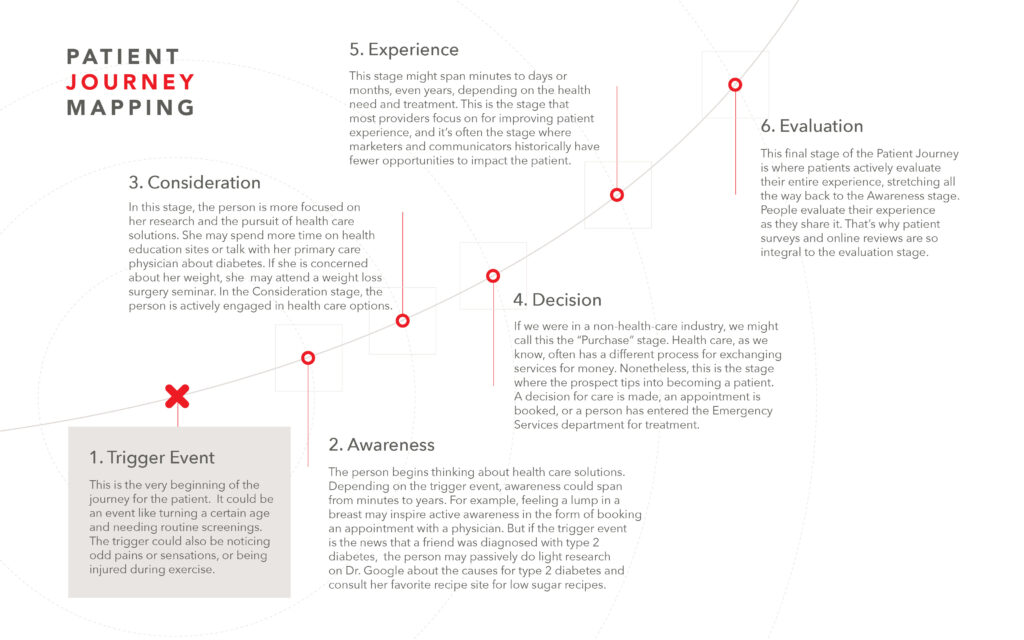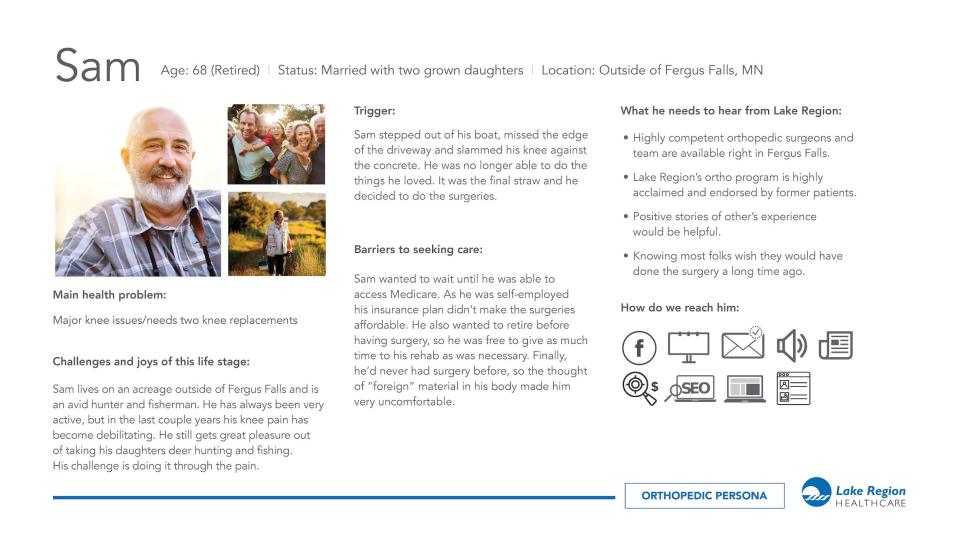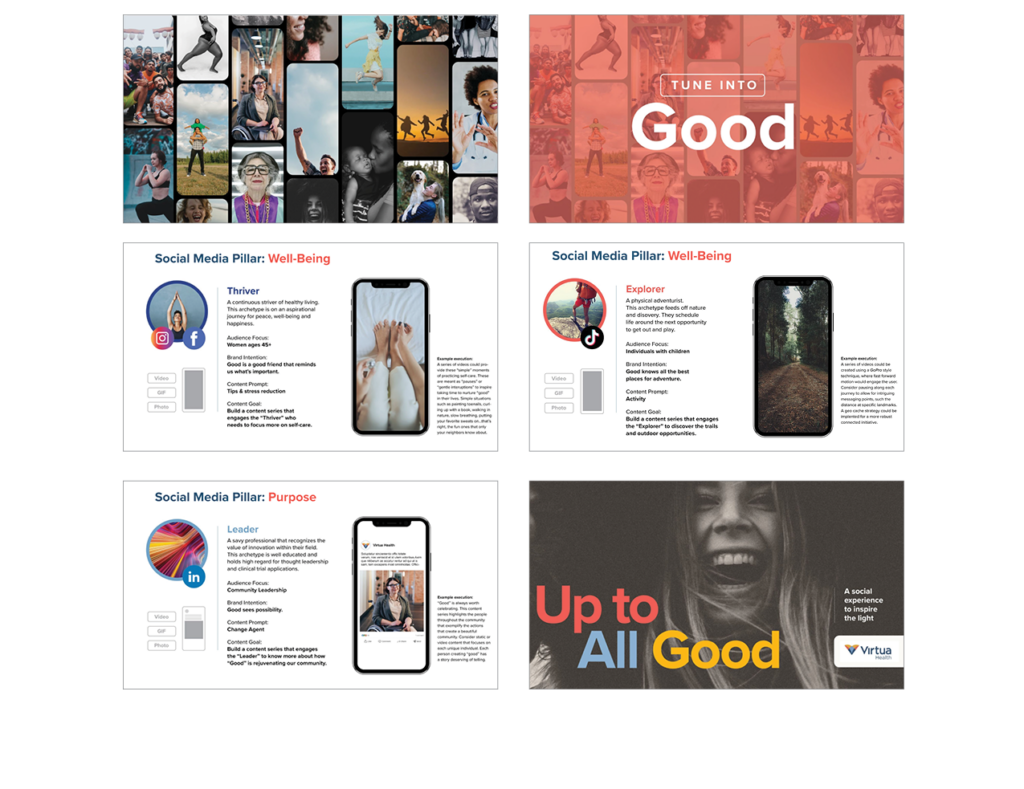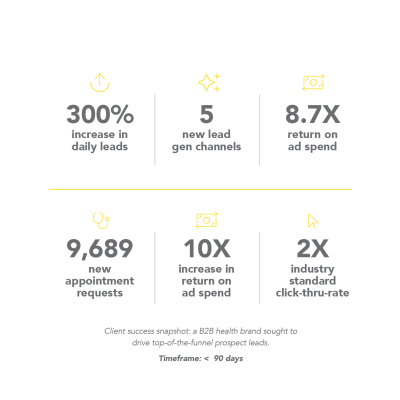The fourth of a series of four Hailey Sault Engage newsletter insights for 2023
Let’s face it, healthcare has seen a whirlwind of tech transformation in recent years—from telehealth to CRM to digital and social platforms. As a result, Hailey Sault’s most forward-looking clients have been adjusting their marketing strategies to meet these changing, more patient-centric demands. One of the hallmark differences between old school and new school thinkers is embracing a POV that’s a lot more patient focused. That includes moving away from traditional marketing strategies that tend to be product-centric, while leaning into human-centered design (HCD) marketing strategies that focus on addressing the needs of the patient, and therefore creating better performance in this increasingly digital world.
So, what are the measurable outcomes that differentiate HCD marketing strategies from traditional marketing strategies in digital healthcare marketing?
Patient Experience
One of the most significant differences between HCD marketing strategies and traditional marketing strategies is aligning with the ideal patient experience. HCD marketing strategies prioritize improving the patient experience in the Empathy Phase, with a focus on data, personas and patient journeys. All of which leads to the delivery of appropriate messaging that meets them where they are in their journey. It’s that sense of being heard, felt or understood that increases patient satisfaction, loyalty, and advocacy. Traditional marketing strategies may not prioritize the patient experience, which can lead to a negative patient experience and lower patient satisfaction.


Measurable outcomes related to patient experience can include patient satisfaction scores, net promoter scores (NPS), and customer loyalty metrics.
Patient Engagement
Patient engagement is another measurable outcome that differentiates HCD marketing strategies from traditional marketing strategies in digital healthcare marketing. HCD marketing strategies focus on engaging patients in their care by providing easy-to-use and accessible solutions.
Throughout the Prototyping Phase, messaging that elicits specific actions is developed and tested. Unlike traditional methodologies, this part of the HCD process delivers the creative feedback loop necessary to ensure that you are meeting people where they are along their patient journey. And that’s what leads to real engagement.
Traditional marketing strategies focus more on service promotion over prioritizing patient engagement, which can lead to patients being less involved in their care and lower health outcomes.
Measurable outcomes related to patient engagement can include the Patient Activation Measure (PAM), and the Patient Engagement Index (PEI).
Innovation
Innovation is another area where HCD marketing strategies excel. By taking a user-centric approach, HCD marketing strategies identify unmet needs and develop solutions that address those needs. Traditional marketing strategies may not prioritize innovation, which can lead to solutions that are outdated and less effective.


Measurable outcomes related to innovation can include the number of new products or services launched and, from an organic POV, the number of positive media mentions related to innovation.
ROI
While HCD marketing strategies may require more resources and time upfront, they often lead to better ROI in the long run. By improving the patient experience and engagement, you can increase patient satisfaction, loyalty, and advocacy, which has a 1:1 relationship to increased revenue and market share. Traditional marketing strategies may lead to short-term gains but may not result in sustained growth.

Measurable outcomes related to ROI can include revenue growth, market share growth, and customer lifetime value (CLV) metrics.
HCD marketing strategies offer many measurable benefits over traditional marketing strategies in digital healthcare marketing. By focusing on the patient’s needs, you can create solutions that improve the patient experience, engagement, and ultimately lead to better health outcomes. While it may require more resources and time upfront, the long-term benefits of HCD marketing strategies make it a worthwhile investment for health systems or provider groups looking to grow and succeed in today’s patient-centric healthcare landscape.



